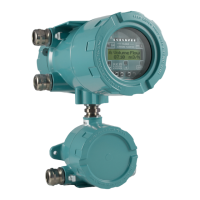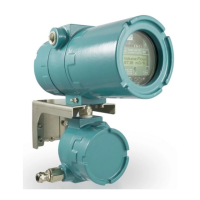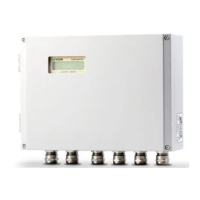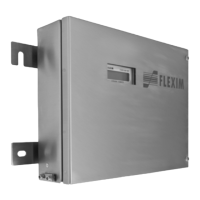9 Measurement
9.3 Start of the measurement FLUXUS G801
2020-06-26, UMFLUXUS_G801V1-0EN
98
Fine adjustment of the transducer distance
• If the displayed transducer distance is adjusted, press ENTER.
The measuring run for the positioning of the transducers is started.
The amplitude of the received signal is displayed by bar graph S.
• Shift one of the transducers slightly within the range of the recommended transducer distance until the bar graph
reaches the max. length (6 squares).
The following quantities can be displayed in the upper line by pressing and in the lower line by pressing :
If the signal is not sufficient for a measurement, Q= UNDEF will be displayed.
In case of large deviations, check if the entered parameters are correct or repeat the measurement at another point on the
pipe.
After the precise transducer positioning, the recommended transducer distance is displayed again.
• Enter the current (exact) transducer distance.
• Press ENTER.
Repeat the steps for all channels on which a measurement is made. The measurement will be started automatically.
Consistency check
If a wide range for the sound speed has been entered in the program branch Parameter or the exact parameters of the
fluid are unknown, a consistency check is recommended.
The transducer distance can be displayed during the measurement by scrolling with .
The optimum transducer distance is displayed in brackets (here: 50.0 mm) in the upper line, followed by the entered
transducer distance (here: 54.0 mm). The latter value has to correspond to the adjusted transducer distance.
• Press ENTER to optimize the transducer distance.
The optimum transducer distance is calculated on the basis of the measured sound speed. It is therefore a better
approximation than the first recommended value which had been calculated on the basis of the sound speed range
entered in the program branch Parameter.
If the difference between the optimum and entered transducer distance is less than specified in the following table, the
measurement is consistent and the measured values are valid. The measurement can be continued.
• If the difference is greater, adjust the transducer distance to the displayed optimum value.
• Afterwards, check the signal quality and the signal amplitude bar graph.
• Press ENTER.
Fig. 9.1: Diagnostics window
■<>■ – transducer distance
time – transit time of the measuring signal in μs
S – signal amplitude
Q – signal quality, bar graph has to reach max. length
Fig. 9.2: Diagnostics window
S=■■■■■■
A:■<>■=53.9 mm!
S=■■■■■■
Q:■■■■■■■■■■■■
time= 94.0 µs
Q:■■■■■■■■■■■
L=(50.0) 54.0 mm
54.5 m3/h
